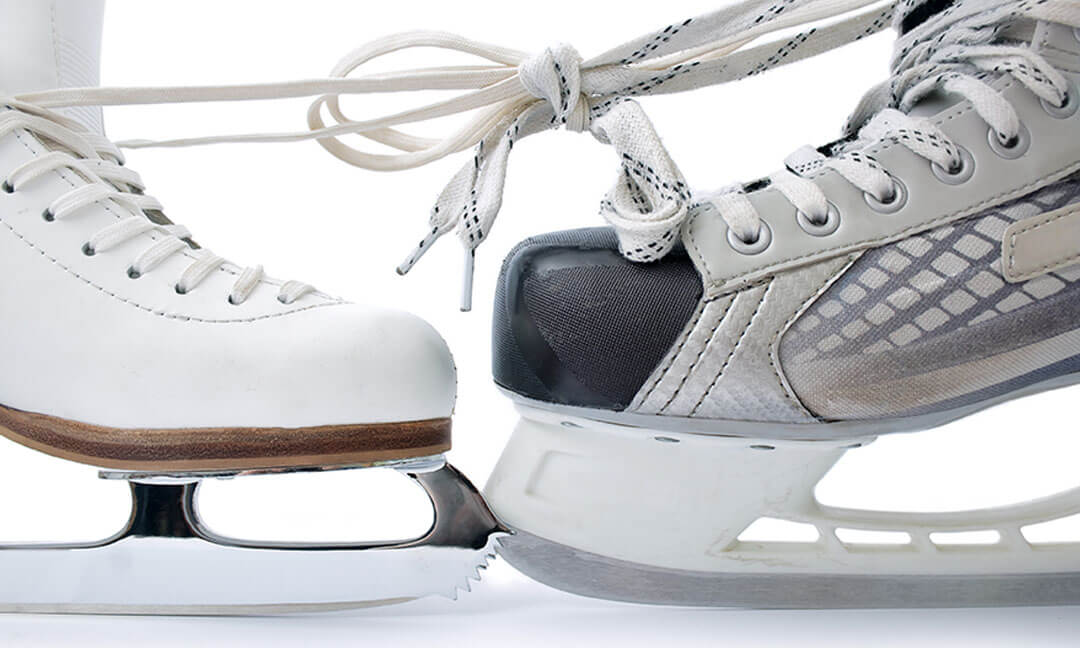Best Synthetic Ice for Goalies and Off Ice Training (2025)
As the sport of ice hockey continues to grow in popularity, more and more goaltenders are looking for ways to improve their skills and take their game to the next level.
In order to do this, they need to create the ideal off-ice training program while away from the rink that includes access to a high grade synthetic ice surface.
PolyGlide Ice offers a Pro-Glide infused surface that is simply the best synthetic ice for goalies on the market in that it checks all the boxes for training elite goaltenders.
The Pro-Glide surface is made of a high-quality polymer that provide a realistic skating experience and lateral glide which is a concern for many goaltenders.
This enables goalies able to improve their skating technique, reflexes, and puck handling skills without ever leaving your home.
CREATE YOUR OWN "GOALIE BOX" RINK PACKAGE AND WORK ON YOUR SAVES ALL-YEAR LONG!

Lateral Slide
Probably one of the most common questions goaltenders ask us when inquiring about our synthetic ice surface is, "How is the lateral glide from post-to-post?
The great thing about our Pro-Glide infused surface is that the surface friction is greatly reduced by the slip agent additive we infused to each sheet during the manufacturing process.
There are many synthetic ice products available in todays market that offer minimal glide with very small amounts of slip agent additive in the surface.
In fact some manufacturers use a topical spray additive during the curing process and don't add any slip agent at all throughout the panel that winds up offering minimal results.
To get the lateral glide you need we completely infuse each Pro-Glide panel with our proven slip agent that helps maintain the glide throughout both sides of the panel for many years after purchase.
We've be able to create the ideal panel for goalie training both through in house R&D and direct feedback from goaltenders and trainers alike.
We've included a few training elements here for you to review to help with your training and be the standout goalie every time you hit the ice!

Training Elements for Elite Goalies
There are many different skills both physical and mental that goaltenders need to work on in order to be successful throughout their career.
These include staying calm under pressure, making good decisions, playing with poise, having a strong rebound control, and being able to make saves consistently.
If you are looking to improve your skills as an ice hockey goaltender, these are some of the areas you need to focus on!
Take a minute to review each of these five elements::
Mental Toughness - Staying Calm Under Pressure
There are many situations in life when we feel pressure to succeed.
This pressure can be especially intense when it comes to our careers, hobbies and especially athletes but for goaltenders, the pressure to win can be overwhelming at times.
It is essential for them to find a way to stay calm under pressure and perform at their best game in and game out all season long....which can sometimes seem quite grueling.
When the game is on the line and the pressure is mounting, it's important to be able to stay calm and make smart decisions and build the "Mental Toughness" that's required for this position.
This can be difficult to do, but it is something that all goalies need to work on if they want to be successful at the position and bounce back quickly when things don't go their way.
One of the most important yet simplest things for any goaltender to do when feeling pressure is to focus on their breathing.
By taking deep, slow breaths you can help lower your heart rate and calm your nerves and reflexes which is critical.
It is also important to focus on positive self-talk built within your mental toughness and include it in your daily training "bag of tricks" that you can turn to throughout the season.
This means telling yourself that you can handle the pressure and that you will achieve your ultimate goal of succeeding regardless of the circumstances.
Visualization is another helpful technique that involves picturing yourself succeeding in the event or competition as by visualizing success, you are more likely to achieve it.
There are many other techniques that can help a goaltender stay calm under pressure and you should experiment with them all to find what works best for you.
Remember, it is crucial to stay calm under pressure if you want to perform at your highest level and achieve success.
Making Good Decisions
How do goaltenders make good decisions during a game and perform at their highest level?
This is an interesting question that has been studied by researchers for many years.
Some people believe that the best goaltenders are born with the ability to make good decisions under pressure, while others believe that it is a skill that can be learned.
You need to be able to read the play as it develops and make quick decisions when handling the puck in order to give your team a chance to win.
This can be difficult, but it is something that you need to work on if you want to round out your overall game and become a standout at the position.
Some of the best goaltenders are excellent at being "verbal quarterbacks" behind the defense while under attack in their zone.
They also have to be able to anticipate what the attacking team may do next with the puck and react accordingly.
Making all of these calculations quickly and accurately is not an easy task and for some goaltenders it comes easily as they stay mentally focused on the game not matter what the score.
Having self-control is the ability to avoid bad habits and stay focused on what is important and to filter out distractions and focus on the task at hand.
Goaltenders who want to perform at their highest level should focus on training their working memory and self-control.
By doing so, they will be better equipped to make quick decisions under pressure and stay focused on the task at hand.

Playing With Poise
Playing with poise is essential for any goaltending that wants to succeed in the game of ice hockey and play at the Elite or higher level.
This means not losing your head when things don't go your way regardless of the scoreboard.
When goalies are able to play with poise, they often look more confident and perform better when the game is on the line, keeping their composure and making the big save when it matters most.
It can be easy to get caught up in the moment and make mistakes when the pressure is on, but if a goalie can keep their composure, they increase their odds of getting the win!
It takes practice, but it's something that all goaltenders can learn to do and build on with each practice and opportunity they get to play....make it matter!
Controlling Your Rebounds
There are few positions in sports that are as important as the ice hockey goalie as they are responsible for keeping the puck out of the net, and often face a barrage of shots from the opposing team.
One of the key ways for goalies to limit scoring chances is by controlling the rebounds in front of the net and having strong rebound control which will ultimately limit scoring chances.
You need to be able to limit the number of rebounds that your opponent's get in order to give your team a chance to win and is something that must constantly be worked on.
When the puck hits the goaltender, it can often bounce off in any direction and if they're not able to control where the puck goes, it could end up right in front of the net, giving the opposing team an easy scoring chance.
To prevent this from happening, goalies must be aware of where they are directing the puck when they make a save and have the awareness to try to direct the puck to an area where there are no opponents, such as behind the net or into the corner.
In addition to controlling rebounds, goalies must also be quick and agile to prevent their opponents from getting close to the net.
Often there are times, an opponent will try to take a shot while the goalie is still recovering from making a save.
To prevent this from happening, goalies must be quick on their feet and able to get back into position quickly.
They must also have good communication with their defensemen, as they will often be the ones who are able to help keep the opponents away from the net.
Goalies who are able to control the rebounds and keep their opponents away from the net are often successful at preventing goals.
By following these tips, goalies can improve their chances of having a successful game.

Make Saves Consistently
In order to be a successful ice hockey goalie, you need to be able to make saves consistently during a game which can be difficult if you don't have the proper techniques and strategies.
It's important that you make saves more often using some helpful resources that can further improve your skills as a goalie.
Making saves consistently is key for goaltenders so you can make the big save when your team needs it most!
One important tip that can help you make more saves is to focus on the puck as this will help you anticipate where it's going and come up with the save
It can be easy to get distracted by other players on the ice or the crowd noise, but if you want to be successful, you need to keep your eyes on the puck at all times.
Practice making your saves as much as possible as the more you practice, the better you'll become at making them in game situations. Having a home rink outfitted with the best synthetic ice for goalies affords you the extra ice time to work on those saves!
If you follow these tips, you'll be well on your way to making more saves during games.
Conclusion
There's a lot to consider when looking to take your goaltending skills to the next level and having your own home ice rink definitely helps give you an edge on the competition.
Synthetic ice is becoming increasingly popular among elite goaltenders to work on all the elements and skills required to get your stats where they need to be.
Obviously it's up to you to put in the effort but if you're a dedicated player that is ready to put in the work why not offer yourselves the tools you need unlimited ice time!
If you're looking to take your game to the next level, consider checking out the best synthetic ice for goalies, the PolyGlide Ice Pro-Glide Infused surface.....You won't be disappointed!






















